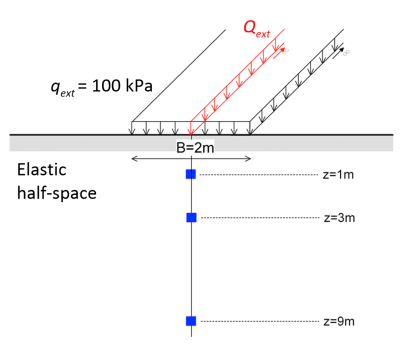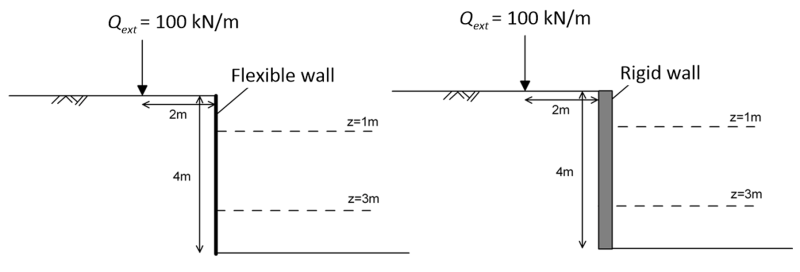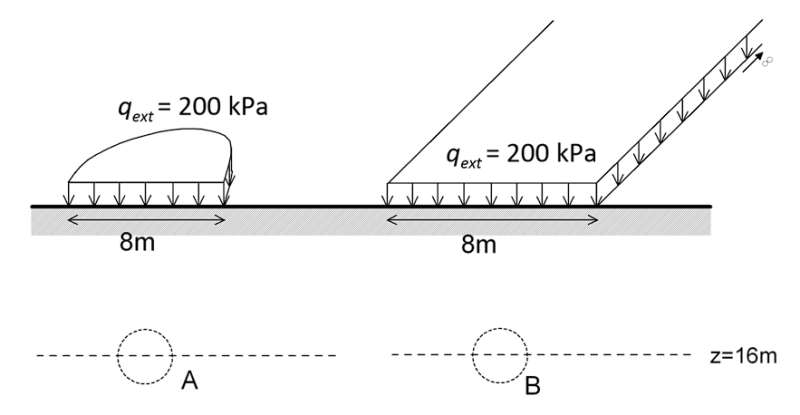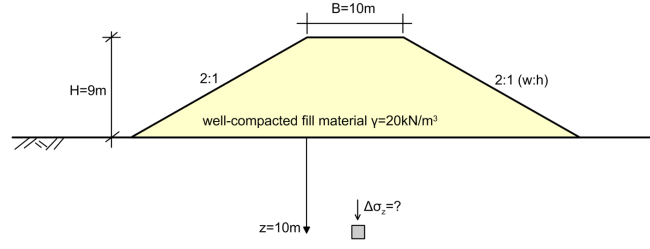3.9 Additional problems
3.9.1
You are called to verify Saint-Venant’s principle on the difference between the effects of two dissimilar yet statically equivalent loadings becoming negligible at sufficiently large distances from the loading. For that, you should calculate the vertical stress increment Δσz below the axis of an infinite strip pressure of magnitude qext = 100 kPa and width B = 2 m, and compare it with the corresponding value of Δσz due to a statically equivalent line load, Qext. Try the comparison at depths z = 1 m, z = 3 m and z= 9 m from the ground surface.

Answer:
| z (m) | Δσz (strip pressure, kPa) | Δσz (line load, kPa) | Difference (Δσz,line-Δσz,strip)/Δσz,line (%) |
|---|---|---|---|
| 1.00 | 81.83 | 127.32 | 55.59 |
| 3.00 | 39.58 | 42.44 | 7.22 |
| 9.00 | 14.03 | 14.15 | 0.82 |
3.9.2
A line load of magnitude Qext = 100 kN/m is applied at 2 m from the crest of a 4 m-deep excavation, which is supported by a flexible retaining wall e.g., a sheet pile wall. Calculate the horizontal stress Δσx due to the external load acting on the wall at z = 1 m and z = 3 m from the top of the wall. Calculate the stresses again, considering this time a rigid retaining wall e.g., a basement reinforced concrete wall.

Answer:
| z(m) | Δσx (flexible wall, kPa) | Δσx (rigid wall, kPa) |
|---|---|---|
| 1.00 | 10.19 | 20.38 |
| 3.00 | 4.52 | 9.04 |
3.9.3
Two alternative routes are examined for a sewage pipeline, passing below locations A and B. You are the designers of the pipeline. Which one would you prefer, and why? Justify your answer.

Answer:
Location A.
3.9.4
Calculate the vertical stress below the axis of the embankment shown below, at a depth z = 10 m.

Answer:
Δσz = 136 kPa

